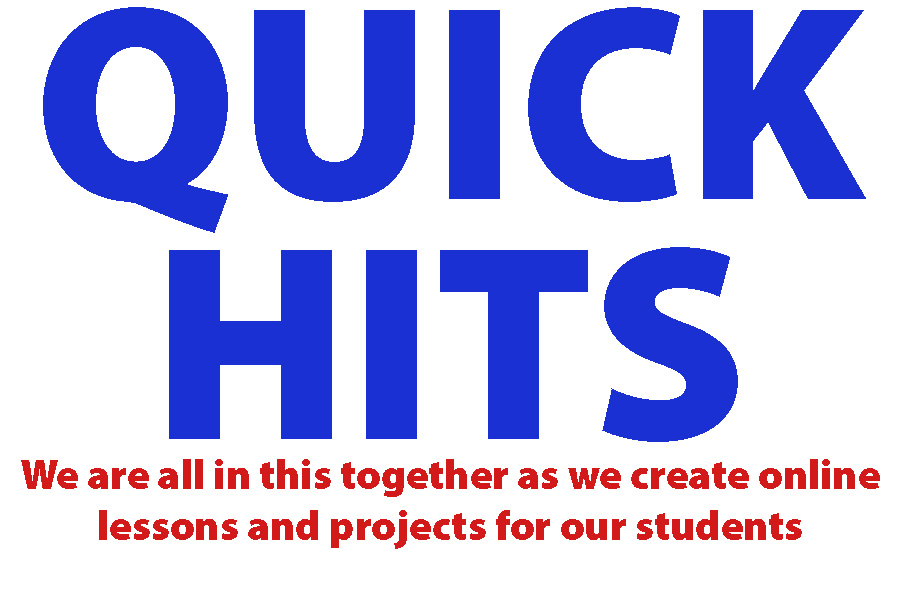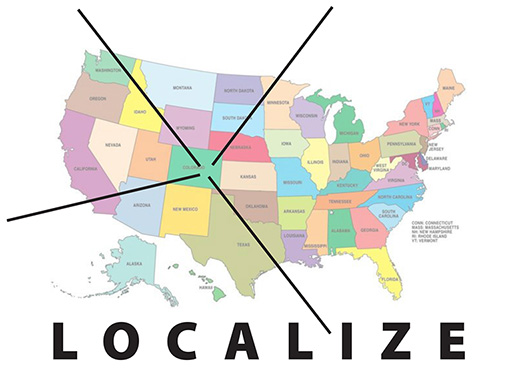Fun video combines journalism with history
Many of our students may not have ever visited Mancos, in the far southwest corner of the state, but they may want to take a road trip to see one of the oldest and best-preserved presses in the country. Video students may enjoy the professional mix of interviews, b-roll, and narration. The program takes viewers back to a time when the printed newspaper and its focus on local news, even as seemingly minor as locals taking trips or hosting dinners.
JEA Student Press Rights Committee offers wide range of lessons
Looking for short discussion starters that get students thinking about ethical situations, all based on true situations? These scenarios are exactly what you need.
The SPRC site offers other great online lessons, all created with asynchronous remote learning in mind.
Freedom of Speech rights, especially when it comes to students in any sort of student publication, can be very complex, but there are some overall principles that can lead to a solid understanding of the basics. This lesson provides details and background on what rights student journalists generally possess, gives resources for understanding how any local policies affect those rights and supplies scenarios and links to promote further discussion and involvement.
This online lesson helps students independently learn the basics of copyright law and the exceptions to it. After a brief tutorial, students will then either draw or create an online infographic explaining what they have learned.
This online lesson guides students through the basics of libel law and the specifics of how it applies to real-world situations. It includes a brief instructional video, a quiz for understanding, and a discussion/writing prompt.
Staff manuals provide student journalists with resources and guidance during times of need. Now is the perfect time to reevaluate (and review) your current guidelines — and maybe even policies. These virtual conversations will not only help students understand what to do, but also what they may want to examine for future.
Finally, you and your students should take a few minutes to read this post from Quill and Scroll on Grand Junction HS earning a prestigious award for its investigative reporting. No matter what the near future looks like in our media programs, you can be sure that there will be opportunities for reporters to dig a bit deeper. Q&S Executive Director reminds us of the four basic questions journalists should ask when contemplating reporting that can make a significant difference in their communities.
By Jeff Browne, Executive Director
Orange and Black and read all over
Grand Junction students’ work can guide your investigative efforts
Madi Martinez, Luke Aubert and 23 other journalists from Grand Junction High School were awarded this weekend with the Student Journalist Impact Award, judged and sponsored by Quill and Scroll, in conjunction with the Journalism Education Association.
You can read more about the award and their work in this news release written by JEA.
Madi, and Luke, the editors of the publication The Orange and Black, along with their staff last year produced a 28-page special edition that chronicled their investigation into the condition of the GJHS building.
The investigation was more than two months in the reporting, but the final product was worth it, not because it won our award, but because it opened the community’s eyes to the chronic neglect and underfunding their school district has been dealing with. It led to a referendum last November in which voters narrowly defeated a proposal to raise funds to improve the condition of the building. Despite that defeat at the ballot box, students and school officials feel empowered to raise the issue again — all because of the work of student journalists.
The meaning of their work — and the meaning of the work done by all those students who have won the Student Journalist Impact Award over the past 26 years — carries lessons for every student journalist and journalism adviser who want to make “a significant difference in his/her own life, the lives of others, the school he/she attends and/or the community in which he/she resides.”
If that’s your goal as a journalist, then you need to ask yourself several questions.
- Is there a problem here?
- How did it get to be this way?
- Who knows the most about this problem?
- How can this problem be solved?
Is there a problem here?
Problem-solving is one of journalism’s highest callings. But identifying real problems and understanding how they can be fixed isn’t easy.
Bob Woodward calls this investigative stage “Find Your Story,” and that’s the essence of this step. But where does that story come from? The perceived slights of a peevish reporter? The personal vendetta of a disgruntled student, parent, administrator or teacher? Hardly.
When I taught investigative journalism at the University of Colorado, we started with a simple exercise — crowdsourcing. What did our audiences — and that included students, parents, administrators and teachers — think was worth investigating? And what information did they have that we could sift through to determine whether this story really was a story?
In other words, before we began our in-depth reporting, we had to do reporting.
For every reasonable lead we were given, sources gave us another dozen that were based on perceived problems, but nothing that had an impact on a great number of lives.
In the case of the students at GJHS, they began with simple observation — the reporters and their classmates observed the dilapidated conditions in their own school and began the investigative process.
Their observations, dramatized in the report as a series of photos both historic and contemporary, became a two-page spread at the beginning of the Orange and Black series simply showing the problem in the most visually arresting way.
In Woodward’s terms, this is the “hunt down documents” part of an investigation.
How did it get to be this way?
At CU we were doing an investigation into several stories about immigration in Colorado, so the “hunt down documents” phase began with “Migrahack,” a program sponsored by professional journalists in Los Angeles, Washington, D.C. and New York. They helped us identify government and non-governmental databases from which we could draw data, as well as historical documents that included legislation passed by the U.S. Congress all the way back to the late 18th century.
Similarly, when we reported on gun deaths in Colorado, we collected coroner’s reports from all 64 of the state’s counties so we could have accurate counts and descriptions.
The high school students in Colorado found documents and news reports from the school’s 1956 opening, but also drew a great deal from a 2017 report done by the school district that detailed problems such as mouse droppings and cockroach infestations. They got the unredacted report because they filed a request under the Colorado Open Records Act, the state-level version of a federal Freedom of Information Act (FOIA) request.
The students even cited studies that revealed that a school’s lack of natural light can inhibit learning.
Who knows the most about this problem?
The human element is important to any story, and investigations are no different, but trusted experts are absolutely necessary if any report is going to have authenticity and credibility.
I always asked students to think about “stakeholders” when they did investigative work. That means people who make decisions, people who are affected by those decisions and people who study the impact of those decisions and other decisions like them.
From the very beginning of their report, the students at GJHS contacted and got revealing information from sources that included school district officials, school administrators and academic studies that revealed problems in their school.
The scope and depth of the sources from which the student journalists drew was impressive.
How can this problem be solved?
In 2013, the Solutions Journalism Network was founded in order to “rebalance the news, so that every day people are exposed to stories that help them understand problems and challenges, and stories that show potential ways to respond.”
In Grand Junction, the students looked in-depth at the district’s budget, the challenges facing every secondary school in the district and plans already underway to improve the physical condition of all those schools.
They allowed students, administrators and teachers to envision what a better GJHS might look like.
And they provided contact information of school board members so those stakeholders could voice their vision and concerns to the proper authorities.
It was textbook solutions journalism combined with an investigation.
The takeaway
Finally, it took these students months to complete the investigation, to write the stories, to take the photos, to design the pages, to re-write, edit and fact-check. In the end, they made a lasting impact on their community, and they exhibited the best that student journalism can offer.
Congratulations to Madi, Luke and the staff of the Orange and Black, and to their adviser, Dr. Megan Fromm.




